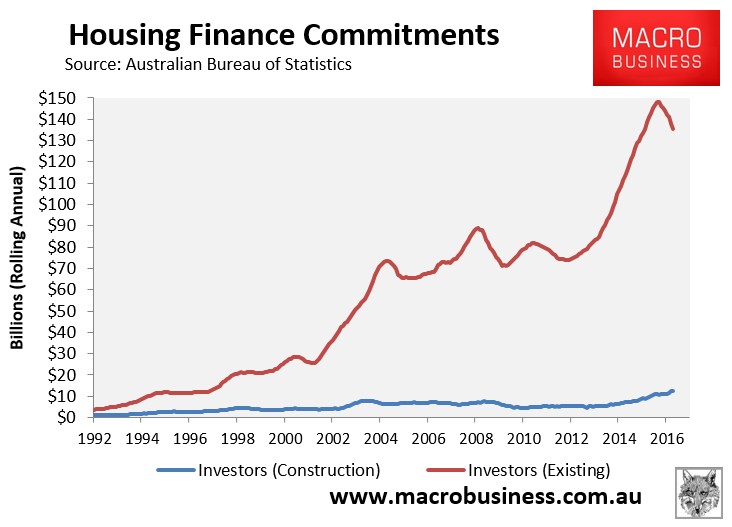The Housing Industry Association (HIA) has penned yet another media release decrying Labor’s planned reforms to negative gearing and the capital gains tax (CGT) discount, while talking-up the need for a broad housing policy agenda:
The heavy focus on negative gearing in the election campaign is misguided and distracts from important housing policy reforms, said the Housing Industry Association, the voice of Australia’s residential construction industry.
“Negative gearing is a sideshow to addressing the housing affordability and home ownership challenge facing younger and future generations of Australians,” said HIA Chief Executive – Industry Policy and Media, Graham Wolfe. “Political ping pong over negative gearing is distracting from the policy reform focus that is required to address rising regulatory costs and highly inefficient taxation of the housing industry, especially new home construction.”
“A focus on housing policy needs to be led by the Federal government through a policy reform strategy, a Federal housing minister within cabinet, and a clear path for cooperation with state and local governments,” said Graham Wolfe. “The argument that housing is a state-based issue is old and tired – it is simply an abrogation of responsibility for housing Australia’s future.”
The misguided focus on negative gearing masks the key issues that need addressing in the fight to generate sustained improvement in housing affordability…
Residential building activity supports over 1 million Australian jobs, and 321,595 firms are directly engaged in the industry. Residential construction generates $162 billion worth of economic activity each year – which is one tenth of total economic activity. The industry provides $77 billion in taxation annually, more than 17 per cent of total taxation receipts.
Given the importance of the industry to Australia’s future growth and prosperity, the housing industry deserves a comprehensive policy agenda from all federal political parties – something that is still to be fully outlined in the current election campaign.
I feel the HIA’s pain in that neither major party has developed a comprehensive policy agenda on housing that encompasses the supply-side.
However, I find it curious that the HIA has opposed Labor’s policy so staunchly when it is a clear improvement on the status quo, and is the only reform on offer from either major party.
Blind Freddy can see that investment in existing dwellings has literally exploded since negative gearing was reinstated in 1987, followed by the halving of CGT in 1999. By contrast, investment in new dwelling construction – which is the supply that the HIA bemoans is far too low – has been poor (see next chart).

By all measures, negative gearing and the CGT discount have been epic failures in achieving the HIA’s goal of boosting new construction, despite their significant cost to the Budget.
So why, then, has the HIA run such furious campaigns against reforms to property tax concessions (e.g. see here, here, here, here, here, here, here and here), which continues today?
Here we have Labor proposing to restrict negative gearing to new homes, thus channeling investment into the exact thing that the HIA is lobbying for – new supply – and boosting jobs for its construction members. Sure, much more could obviously be done on the supply-side. But Labor is the only party offering anything.
I can only speculate yet again that the HIA cares more about protecting the value of its developer member land banks, rather than actually boosting dwelling construction. Otherwise, why would it go to such great lengths and expense to oppose Labor’s ‘negative gearing for new homes’ policy?

